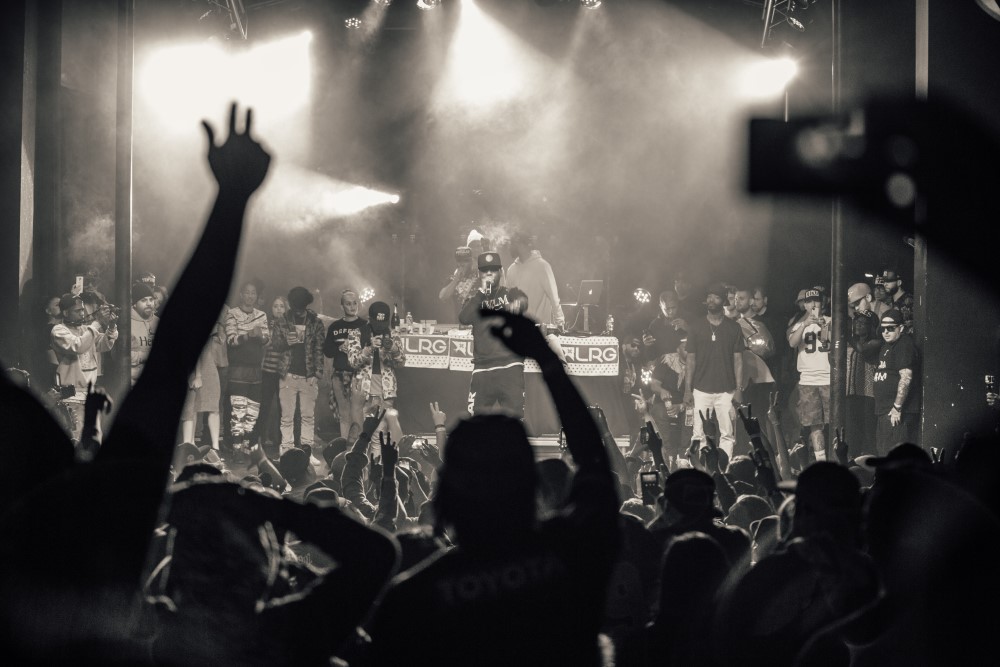Hip-hop now dominates over 35% of karaoke selections in urban venues, a striking rise from just 8% a decade ago. This shift goes beyond numbers—it’s reshaping how people perform and interact during karaoke. The once-simple act of singing along has evolved into dynamic experiences like group rap battles and synchronized crowd participation. Hip-hop artists have revolutionized the karaoke scene, turning it into a vibrant, interactive cultural event.
The Rise of Rap Karaoke
Rap karaoke has grown from a rare novelty into a global phenomenon. Modern karaoke systems now include extensive hip-hop catalogs, offering both censored and uncensored lyrics to suit various audiences and settings.
This evolution owes much to genre fusion, with venues offering tracks that blend R&B hooks and rap verses. The backing tracks, meticulously crafted to retain original production quality, provide clear vocal cues for performers.
Artist collaborations have also expanded the appeal, with mainstream hits featuring rappers opening the door for casual participants. Performers tackling iconic rap verses often spark call-and-response moments, enhancing audience engagement. Whether at a neighborhood bar or a dedicated competition, hip-hop has redefined karaoke, making it more inclusive and energetic.
Popular Hip-Hop Songs in Karaoke
Some hip-hop tracks have become karaoke essentials. Eminem’s “Lose Yourself” and Run-DMC’s “Walk This Way” top playlists globally, alongside crowd-pleasers like Salt-N-Pepa’s “Push It” and Vanilla Ice’s “Ice Ice Baby,” each offering unique challenges for performers.
Genre fusion tracks like Puff Daddy’s “I’ll Be Missing You” and Coolio’s “Gangsta’s Paradise” resonate deeply, combining hip-hop with familiar melodies. Duets like Jay-Z and Alicia Keys’ “Empire State of Mind” or group-friendly anthems like Black Eyed Peas’ “Where Is the Love?” amplify the communal spirit of karaoke.
Contemporary hits like Drake’s “Hotline Bling” and Post Malone’s “Circles” further showcase hip-hop’s melodic evolution, balancing rap and singable choruses. These tracks are accessible to performers of varying skill levels, making them modern favorites.
Breaking Traditional Karaoke Barriers
Hip-hop has shattered old conventions in karaoke, encouraging performers to improvise and reinterpret tracks rather than rigidly following the original lyrics. This freedom boosts confidence, drawing in participants who might have felt constrained by traditional singing.
Genre blending is now the norm, with karaoke performers mixing hip-hop with pop, rock, or R&B to create unique renditions. The rise of karaoke online has further amplified this evolution, allowing performers to explore vast libraries of tracks and experiment with new styles from the comfort of their homes. Virtual platforms also enable global audiences to connect, fostering the same collaborative energy seen in live settings.
- Freestyle sections allow performers to add personal verses to familiar tracks.
- Audiences actively engage as backup vocals or hype crews, moving from passive listeners to participants.
- Scoring systems now factor in rhythm and flow, adapting to the complexity of rap performances.
- Cross-genre mashups continue to rise, reimagining karaoke’s creative potential.
These changes highlight how hip-hop has expanded the boundaries of karaoke culture.
Freestyle Elements During Karaoke Sessions
Freestyle elements have become a hallmark of hip-hop karaoke, turning traditional performances into lively, interactive events. Performers often add their bars or switch up flows during instrumental breaks, blending originality with classic tracks.
This trend fosters a more immersive experience, as audiences respond enthusiastically to improvised verses and collaborative energy. Many participants draw inspiration from their favorite rappers, adopting signature cadences and patterns. These impromptu moments often lead to spontaneous ciphers or mini rap battles, elevating karaoke nights to new heights.
Changing Performance Dynamics
Karaoke performance styles have transformed, incorporating the stage presence and physicality of hip-hop artists. Singers no longer simply stand at a mic—they adopt dynamic gestures and even dance moves, mirroring professional performances.
Call-and-response elements are now a standard feature, with personalized verses and localized references adding a unique touch to each show.
- Performers integrate dance breaks, turning karaoke into a full-body experience.
- Crowds evolve into active participants, providing vocal and physical support.
- Timing displays adapt to accommodate rapid rap flows and shifting tempos.
- Stages now make room for hype crews, reflecting hip-hop’s communal spirit.
This evolution underscores how deeply hip-hop has influenced modern karaoke.
Cultural Impact Beyond Music
Hip-hop’s impact on karaoke extends far beyond the music itself. Lyrical storytelling has become a platform for social commentary, with performers using tracks to express views on current issues.
Karaoke events have also grown into cultural hubs, fostering connections between diverse groups through shared musical experiences. The genre’s integration has led to unprecedented blending of styles, as performers mix hip-hop with pop, rock, and R&B to create vibrant, genre-defying performances. This cross-pollination has enriched karaoke culture, bridging generational and community divides.
Conclusion
Hip-hop has transformed karaoke into a dynamic, inclusive, and interactive art form. What was once a straightforward night of singing pop ballads has become a celebration of rhythm, creativity, and connection. The beats and rhymes of hip-hop have redefined karaoke culture, empowering individuals and communities to share their voices in ways that feel fresh and meaningful.
